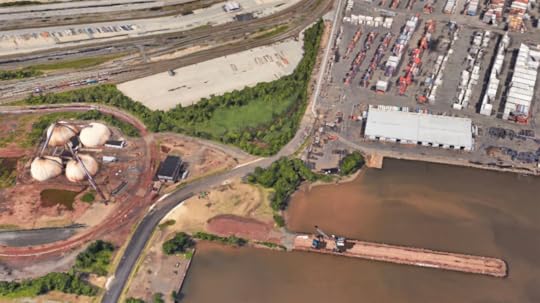Real Life Meets Fantasy
 Every writer has a different process. I retain habits from my days in journalism. Case in point, when I reached one of the big action pieces in The Vengeance Season: Book III of the Covalent Series, I went for a real-world kick start. In the scene, our hero Barakiel battles not only demons, but his more powerful, terrifying enemies. This scene is the start of a sequence of events that puts the vengeance in the season.
Every writer has a different process. I retain habits from my days in journalism. Case in point, when I reached one of the big action pieces in The Vengeance Season: Book III of the Covalent Series, I went for a real-world kick start. In the scene, our hero Barakiel battles not only demons, but his more powerful, terrifying enemies. This scene is the start of a sequence of events that puts the vengeance in the season. After much deliberation and a session bouncing ideas off the hubby, I decided on the location pictured above, a spot I’ve wanted to use for a while. I see it every time I cross the Walt Whitman Bridge from Philadelphia to New Jersey. The place intrigues me.
Once I had the spot — the grounds surrounding an operational pier, part of the Delaware River Port — I couldn’t come up with an opening that satisfied me, so I researched. I looked up what kinds of ships dock there, what they deliver. I hopped on Google Earth and looked around. This real life information, plus the structural details, made the place come alive in my head. I could see my way into the scene.
I began with an image of two of my characters standing at the base of one of the storage tanks. I thought about why they might be standing there, which led me to the weather. Then I was off. The descriptive details began to flow and the whole scene unscrolled like I was watching a movie. All because I looked up the fact that they deliver grains, wood products and fertilizer at this particular pier. Facts you’d need for a news story about the place, but hardly necessary for fiction. Double hardly necessary for science fiction fantasy. Why does it work for me? I have no idea.
You may ask, but what about the worlds you’ve created entirely from scratch? The Covalent Realm. The Destructive Realm. You can’t research them like you’re a reporter.
My answer is, I do! I research them like a science reporter. This is apropos. I can tell you that quite often the reporter a newspaper assigns to cover a science beat has no background in science whatsoever.
 I researched quantum physics to build my worlds, as well as yin and yang principles. Pellus, my character who can manipulate the properties of matter and energy, required further physics research. I watched a NOVA series on string theory, and most recently read the book pictured here, How to Teach [Quantum] Physics to Your Dog, by Chad Orzel. Mr. Orzel did a good job of making the subject accessible, and injected some comic relief through imagined conversations with his dog, but it’s hard stuff. Dry stuff. Physics is more fun in science fiction than it is in real life, take my word for it.
I researched quantum physics to build my worlds, as well as yin and yang principles. Pellus, my character who can manipulate the properties of matter and energy, required further physics research. I watched a NOVA series on string theory, and most recently read the book pictured here, How to Teach [Quantum] Physics to Your Dog, by Chad Orzel. Mr. Orzel did a good job of making the subject accessible, and injected some comic relief through imagined conversations with his dog, but it’s hard stuff. Dry stuff. Physics is more fun in science fiction than it is in real life, take my word for it.Nonetheless, real-world information worked its magic on me. No matter how fantastical my worlds are, I use science (at least my imperfect understanding of it) to launch into the creative process. And boy o’ man, it’s fun.

Published on June 04, 2017 08:33
No comments have been added yet.



